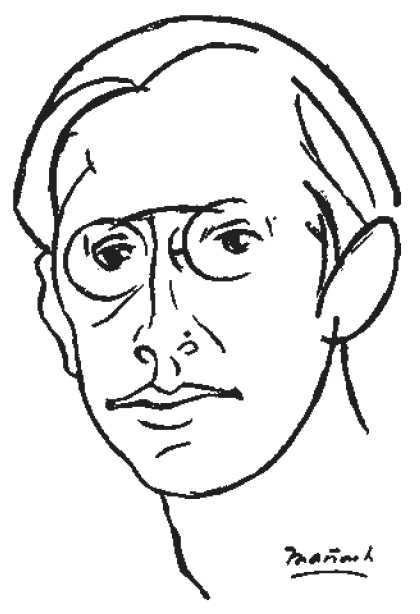4.4.7 The essay work of Francisco José Castellanos (1892 – 1920)

Although Francisco José Castellanos’s life was quite brief, he still left behind a remarkable body of work, with a personal touch that denotes his mastery of a vast culture, whose expositions were enjoyed by many young intellectuals who would later shape the intellectual landscape of the following decades with their ideas. His work appears somewhat detached from national tradition but nonetheless integrates into it due to his philosophical and political optimism; in the latter respect, he apparently sensed the temporary nature of the Republican status quo.
His essays were compiled in an edition that appeared posthumously in 1926 under the title “Essays and Dialogues,” a moment that corresponded to the emergence of the avant-garde concepts that Castellanos’s text anticipated.
About these, Jorge Mañach would write: “They have the trace of something intimate. Not the wandering and haughty introspection of diaries with literary concerns, nor the irresponsible speculation of notebooks with a hidden discipline; but rather a difficult exclusivity—that’s the word—the punished finesse of something written to be read to friends—no more than three—some Sunday afternoon, on the hill open to the sea and fragrant with tea smoke.”
His ideas appear diffuse, with a certain conceptual obscurity hidden beneath the simplicity of his exposition. This perhaps connects with the perception of him as our first pure essayist, whose discourse eluded the most cherished rules, and in this was also implicit a break with modernism and its conception of perfect aesthetic chiseling. Among his most widely distributed texts are “The Other” and “The Empty Smile,” from 1914 and 1915, respectively.
His vision of the collective as the flesh of the individual, and vice versa, aims to overcome the fragmentations of reality and to intuit its interrelated essence. The principle that “you cannot pluck a flower without upsetting a star” also emerges in his text “The Secret Bond.” However, this is not so much in the temporal plane, where he is primarily interested in the present and not its conditions, in contradiction with his implicit conception of the future as a better time.
His forays into the philosophical realm, even with eventual psychological nuances, denote a marked abstraction and a mode of dissertation that – being so typical – does not show its links with the best discoveries established by the aforementioned disciplines.
He published several texts in the “Balcony of Dialogues” section of “La Nación,” also in “El Fígaro,” and other publications. His style of presentation, the connection of ideas in a manner more intuitive than logical, undoubtedly constitutes a wealth of precedents for the essay genre and its full inclusion as a channel for literature.
In this sense, Jorge Mañach would express: “There is no dense tangle of thought that can be reached through the tangled thread of this prose of suggestions. Francisco José Castellanos is probably the first typical, authentic essayist we have ever had.”








